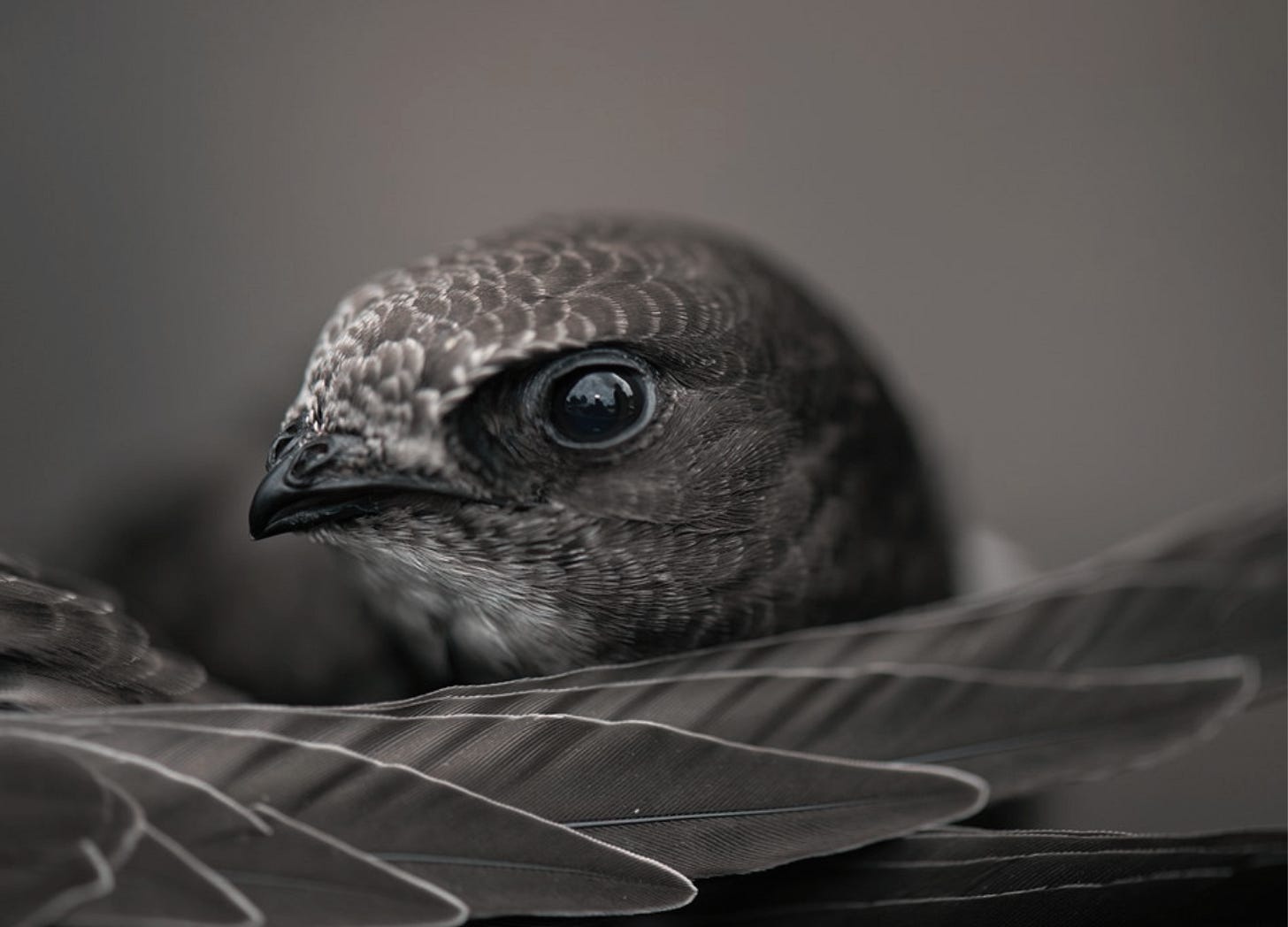The Heart-Stopping Beauty of the Swift
Innate genius, and press-ups
Hello. This post is about Death & Birds.
This week, I met a Swift for the first time. I had seen Swifts before, soaring across the skies in the UK from early May, but I had never seen one up close. This is because Swifts very rarely land—they literally eat, drink, bathe, mate, and sleep on the wing; staying airborne for 10 months at a time1. If that fact is new to you, I highly encourage pausing for a second to take it in.
Swifts leave the UK in July & August to fly 6000 miles or so to Sub-Saharan Africa, where they spend the winter. They are incredibly fast flyers, with top speeds of 70 miles (112km) per hour.
The Swift I met has an injured back leg, and is currently unable to fly. Meeting this majestic being up-close is hard to describe. I have never been to Vatican City, but I know that it houses one of Michelangelo’s most seminal sculptures; the Pieta. It depicts the moment following Christ’s crucifixion, when his body had been taken from the cross and given to Mary, to hold. That this work of art was carved from a singular piece of marble (Michelangelo called it the most perfect block of marble he had ever used), and that it was created by Michelangelo when he was just 23 years old, continually stuns me. The piece itself is literally breath-taking.




